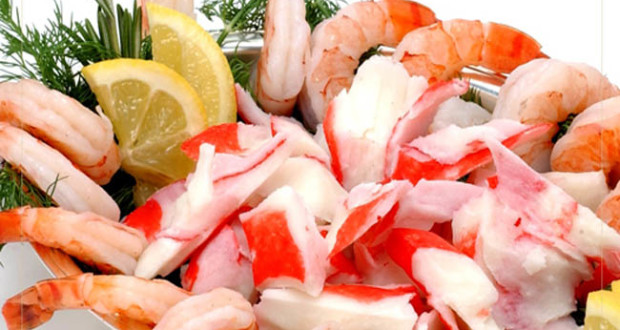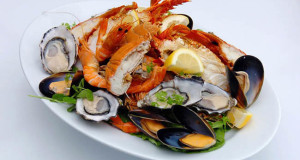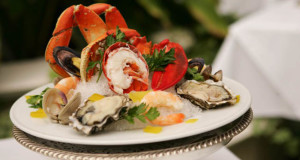An important part of any healthy diet is seafood. Not only is it high in protein, it contains much needed omega-3 fatty acids and other nutrients. To get the most out of your seafood, it needs to be handled safely. Keep in mind the following safety tips when you go shopping for fresh seafood.
When you go to buy fish at the grocery store or in a seafood shop, the fish should be displayed either in a refrigerated unit or on a thick bed of fresh ice. The entire fish area should smell clean and fresh, not at all fishy. Take a close look at the seafood. The eyes on whole fish should be slightly bulged and clear. There are only a few types of fish that have cloudy eyes and most are not commonly sold at the market.
Both fillets and whole fish should have flesh that is firm and shiny. The gills should be a nice bright red and there should be no evidence of slime. Dull colored meat could mean the fish has been sitting there too long. If you press the meat with your finger, it should spring back. Fillets should not look like they are drying out or darkening around the edges. There should be no yellow or green discoloration and there should be no areas that look dry or mushy.
Shellfish come with a tag or label from their processors. No fishmonger should have a problem showing you these tags or labels if you request it. Really good ones will have them displayed with the seafood. These tags are marked with the processor’s certification number and other information you may need to know about your seafood.
Do not eat any mussels, clams, or oysters that have broken or cracked shells. Whole shellfish can be tested by tapping on the shell. Live shellfish will close up quickly when tapped. If they stay open, do not buy them. Lobsters and crabs that are purchased alive should be showing leg movement. These crustaceans spoil very quickly, so unless you are eating them right then and there, you are better off buying them alive.
Once you get home, store your seafood safely. If you will be using it within two days of purchasing, put it in a cold area of the refrigerator. If you will be waiting longer, you should consider freezing it. Living seafood should be eaten the same day you purchase it ideally. Frozen seafood should be thawed gradually overnight in the fridge. Always remember to wash your cutting board, knives, and hands to prevent cross contamination with other foods.
Whether you are making seafood appetizers or a full meal, you should always be sure your seafood is cooked properly. Fish should be opaque and flaky when done. Shrimp and lobster will turn a lovely pearl opaque color. Scallops are a firm milk white. Clams, oysters, and mussels are done as soon as their shells pop open. Those that do not open should not be eaten. Do not overcook your seafood either.
By using these simple steps, your seafood will taste wonderful because you are getting the freshest you can get. Your guests and family will be safe eating seafood that has been handled properly. The worst thing that could happen is causing your guests to be sick. By following these precautions, your seafood will not only be delicious, it will be perfectly safe.





